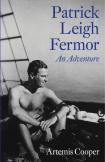A Traveling Man
Travel has been around since Adam and Eve were forced to leave the Garden of Eden, Noah built an ark and Abram, also on God’s instructions, took a look at all of the land before his eyes. Travel writing was invented by Homer and Virgil, and the Synoptic Gospels may have helped revive the genre, what with all the journeying to and from the Galilee and Judea, as well as the boats and sandals.
The travel writer is not content to tell the truth, but to find it. In this sense, the mid-19th century’s Walden became the anti-travel book, as Thoreau had enough of the East in him to posit something altogether surprising about staying put. (Or the desert fathers and mothers, who seem to have written precious little about their journeys, even though traveling to new surroundings was essential to the point their lives were making.)
There used to be far more adventure in travel than there is today. We live in a time when there is really no wilderness left. The mountains, glaciers and passes were all named at least a generation ago. In fact, travel and travel writing changed on Nov. 30, 1915—the day the British government, prompted by wartime considerations, instituted the first passport. From that year forward, the world saw less wandering and more deliberation.
At about the same time, travel was also democratized. The automobile and eventually the airplane created opportunities for every middle-class man and woman to see the world. What had been a privilege of the high-born became something more common, and today, of course, the bestselling travel books are guides penned by ordinary folks like Rick Steeves. But our subject, here, is travel writing of a more literary sort.
Most travel books are, in some respects, reflections on being an outsider, which is why travel writers often get into trouble. Their prejudices show, and often those prejudices have been of the colonialist sort. The travel writer of a generation ago often expended paragraphs on the “difference” of his subjects, their perceived weaknesses and foibles, amid lovely descriptions of their environs. Much successful writing in the latter 19th and early 20th centuries was built on the backs of misunderstanding and misappropriating observations about “foreign” peoples. Those who wrote about the “darkness” of Africa, for instance, were selling “strange” and frightening as travel. That is why Edward Said, in a 1981 review essay for The New Statesman, characterized V. S. Naipaul’s travel writing, which is often haughty about the third world, as “unencumbered with much knowledge or information, and not much interested in imparting any.”
Then there has long been travel writing as a way of self-discovery, at least since the days of medieval pilgrimage. There is a Zen saying, “If you want to find the path, set fire to your own life,” a sentence that even the Catholic writer Graham Greene embodied. He wrote one of the best travel books of the 20th century in Journey Without Maps (1936), which was also about the “darkness” of Africa but used the continent as a backdrop for exposing himself. Since Greene, much travel writing has evolved into landscape as soulscape, a phrase that would have made Greene spit. Think of the travelogue, Eat, Pray, Love.
There is also travel writing that is both informed and inquisitive, self-revealing and self-denying all at once. I am talking about the work of Patrick Leigh Fermor. He transformed travel writing into a genre all his own. His ability to immerse himself in his subject and become an insider without claiming so had no precedent. The best comparison might be to what the great Russian actor Constantin Stanislavski brought to the theater.
Paddy, as he was known to his friends, was born in London in February 1915, a month after the first Zeppelin raids and half a year before the requirement of passports. He was the son of a famous father—a geologist who made his name and spent most of his adult life in India. Paddy didn’t meet his dad until he was six years old. He remained in England to go to the finest schools, only to rebel against their strictures. Expelled from King’s School, Canterbury, at 18 he left for Europe, resolving to walk the length of the continent from the Hook of Holland to Constantinople. The year was 1934.
The new book Patrick Leigh Fermor: An Adventuremakes for fascinating reading, although the reader should really start with A Time of Gifts and Between the Woods and the Water, the two volumes that recount Paddy’s initial journey across nine countries, learning three languages, developing diverse friendships. There were many other journeys and books to come.
Artemis Cooper’s biography of Fermor has been available in England since last autumn, published by the firm of John Murray, who also first published A Time for Gifts. It is written exquisitely by an author who has edited Fermor’s letters, as well as a collection of his occasional essays, and has also written an excellent book on Cairo during the Second World War. Thankfully, Cooper’s book is finally being published over here by the New York Review Books, which is also the publisher of all of Paddy’s backlist in the states.
Fermor is revered in England as a breed of writer that probably no longer exists: one who writes from passion and disdains careerism, embodying his subject matter while maintaining a wide interest and expertise in multiple areas. Paddy was, in fact, the go-to reviewer at The Times Literary Supplement whenever a book seemed worthy of review but none of the specialists seemed right for it. Fermor was the master of the esoteric, and sympathy was his muse.
The best travel writing appears when an author comes from a perspective of near-total immersion in a place, which is what Fermor did so well. He was also mostly self-taught, which gives his writing its freshness. It is full of discovery. Most of all, Fermor came to know Eastern Europe, the Balkans and Eastern Orthodoxy. He became famous for asides on every imaginable Serbian dish, theological debate (I quote him on the filioque controversy in a book coming out next year) and monastic custom. He experienced it all firsthand.
His friend, Lawrence Durrell, recounted in a memoir how close Fermor was to the culture he adopted: “After a splendid dinner by the fire he starts singing, songs of Crete, Athens, Macedonia. When I go out to refill the ouzo bottle...I find the street completely filled with people listening in utter silence and darkness. Everyone seems struck dumb. ‘What is it?’ I say…. ‘Never have I heard of Englishmen singing Greek songs like this!’ Their reverent amazement is touching; it is as if they want to embrace Paddy wherever he goes.”
But that was then. The genre of travel writing is now dominated by different tactics and varying concerns. There are, for example, a variety of ways technology has changed today’s writers. Consider translation apps on iPhones; then imagine Paddy Fermor using one. Not a chance. There are no pragmatic shortcuts to real cultural understanding. A voice-activated mobile phone may help you converse with the locals, but it won’t allow you to learn anything that lasts.
There is more travel writing than ever before. Robert MacLarane, Britain’s best travel writer today, is sometimes compared to Patrick Leigh Fermor. His latest, The Old Ways: A Journey on Foot, was a bestseller in Britain but barely made a ripple over here. MacFarlane writes exquisite sentences, and they reflect deep thinking about walking from place to place. That’s unusual today and resembles Thoreau more than the essays one finds each year in The Best American Travel Writing. The B.A.T.W. 2012 volume included essays first published in periodicals devoted to travel literature, like National Geographic, The American Scholar, The Hudson Review and The Believer. But I think its finest was “Memento Mori,” by the Bulgarian Dimiter Kenarov. It is a reflection on death, funerals and necrologues, and I had a hard time imagining why it was included in a book of travel writing. I also recently enjoyed Sara Maitland’s beautiful From the Forest: A Search for the Hidden Roots of Our Fairy Tales, in which she combines walks in European forests with examinations of how forests and other deep and dark places give meaning to common fairy tales. Like many works in the genre today, Maitland’s is as much cultural anthropology, literary criticism and spirituality as it is travel.
Finally, the New Yorker magazine’s annual “Journeys” issue has featured some of the best travel writing of the last half century. We first read Mencken on Jerusalem, Matthiessen in Tanzania and Leibling revisiting Normandy in those pages. But after Paddy, there is no mold left of what makes great travel writing. The sky is the limit. Which is why, for sheer storytelling verve and fresh interest, my favorite in the April 2013 “Journeys” issue was by Burkhard Bilger, “The Martian Chroniclers,” about the men and women who are leading the way of exploration to Mars. Perhaps outer space is the true, final wilderness.
This article also appeared in print, under the headline “A Traveling Man,” in the September 9-16, 2013, issue.








